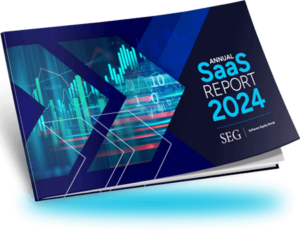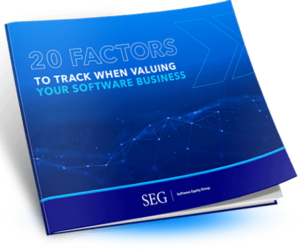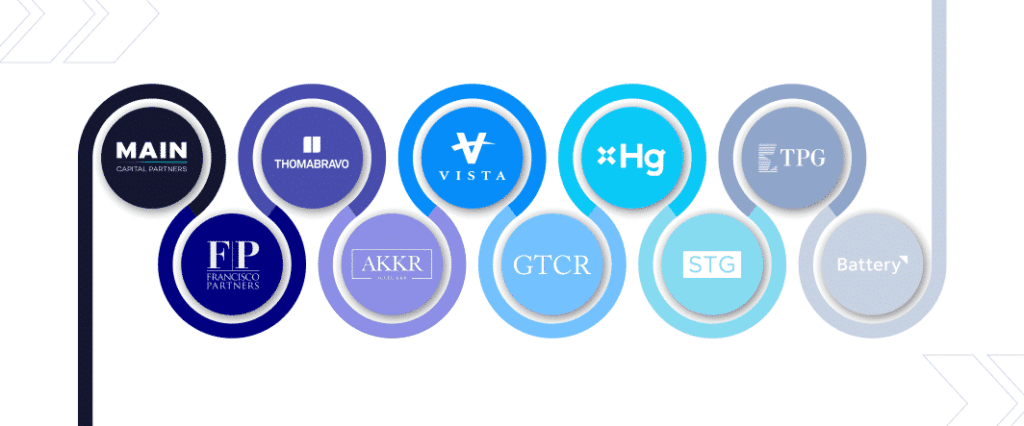- Company
Featured Resource
CLIENT STORYModern Message
To Real Estate
Giant RealPage
- Sectors
Featured Industry Report
EXPERT SERIESManufacturing Software
Report – Part 2
- Research
Featured Resource
FEATURED REPORTThe SEG 2024
Annual SaaS Report
- Tools
Featured Resource
WHITEPAPER20 Factors to Track When Valuing Your
SaaS Company
- Blog
The Software Buyer Mindset Has Changed
An editorial excerpt from Software Equity Group’s 3Q10 quarterly report, written by our Founder & Managing Director, Ken Bender. You can download the complimentary quarterly report by visiting our website:
https://softwareequity.com/research_quarterly_reports.aspx
We’re told the reason many of our readers consistently download our monthly and quarterly reports is they’re the one place – we’d like to think the best place – to find virtually all they need to know about the highly dynamic, ever-changing financial state of the software industry. And so our 3Q10 Report includes all of our many standard tables, charts and graphs, several new charts, and some occasionally provocative observations and forecasts about the balance of 2010 and the year ahead. Exit valuations are up sharply, deal activity is fairly robust, public software companies are growing their top lines and improving their operating margins…
It’s not the whole picture, though, which is why we thought it important to add some qualitative insights and personal observations about the current deal environment, as well.
It was estimated several years ago that some 65% of software acquisitions over the past 20 years did not come close to yielding the benefits or returns acquirers anticipated. As such, they were viewed as failures due to a plethora of contributing factors, including misguided strategy, grossly inadequate integration planning, poor due diligence, culture clashes… it’s a long list. Whether the percentage is accurate or not, few will dispute that trillions of dollars spent on mergers and acquisitions have, in many cases, yielded very disappointing returns.
Of course, there have been many thousands of software transactions in the past decade that have met or exceeded expectations, and a good number have proven to be enormously successful. Those wins helped assuage the disappointing returns and write-offs of prior deals, and motivate public software companies and private equity/growth equity firms to continue buying. In the go-go days of the last decade, particularly 1999 – 2001 and 2006 – 2007, it was easier to focus on the wins, and write-off the losses.
But a long, brutal and scary recession has chastened buyers, and has made the historically acceptable mortality rate unacceptable going forward. Software buyers are still buying, but M&A thinking and approach has changed.
Software company buyers – primarily public software companies and private equity firms, either directly or through portfolio companies – are highly motivated, but far more circumspect and disciplined than we’ve ever seen them. Most have spent time and resources creating a shopping list that’s closely tied to the latest strategic plan. New M&A ideas are not vetoed automatically, but are assessed in terms of how much they reflect and leverage the strategic plan, rather than their individual sex appeal.
As important, public software company buyers today are consensus driven to a degree beyond anything we’ve seen in the past. Very few CEOs are ramming deals through their organization’s M&A pipeline because they unilaterally deem them essential to future success. Boards are far more hands on, insisting upon multiple reviews and discussions about a proposed deal – even a very small one. Key functions – product management, development, finance, corporate strategy, business unit head – are involved early on and usually stay involved. Not only do these stakeholders meet periodically and collaborate on a proposed acquisition, each often has a veto.
How has this consensus driven approach of most public software company buyers affected the M&A process? A sell-side candidate today needs to be painstakingly positioned and carefully profiled when presented to a potential acquirer. The prospective buyer – and that means most of the key stakeholders who are initially polled about the opportunity – must immediately get it, and resonate with it. If they don’t, it’s over before you begin.
The vast majority of buyers today prefer a two or three hour introductory phone call over an in-person meeting. These days, there may be a half-dozen people in the room at the buyer’s end, and a few calling in from the road. We find these stakeholders are considerably more prepared today than in the past. It’s likely they’ve had more internal discussions, read more market analyst reports, queried more consultants, and spent more time assessing the market, than at anytime in the past. Each will filter the seller’s presentation based on this research and his/her corporate function and agenda, seeking to qualify the target as a worthy candidate, hoping it provides the right answers to open questions and addresses key concerns. It’s rapid, it’s rigorous and it can be nerve racking.
And the focus of this first meeting today? It’s the same today as in the past, your business model. But there may well be more probing questions about your go-to-market strategy, typical sale, revenue breakdown, customer concentration, pricing methodology, and implementation effort and timing.
But expect your products to be in the limelight for much of the meeting. You’ll present a detailed overview of your product suite, its key functions and features and its underlying technology platform. You’ll want to do so proudly and with conviction. Be aware, though, you’re often walking a minefield of product and technology biases, prejudices and predispositions.
If you survive the first meeting, there will be a follow-up meeting, but usually not for several weeks to allow internal debriefing, analysis and consensus building. The second meeting will drill more deeply into your products, seeking to determine how closely your product suite’s functionality, architecture, technology and API satisfy the buyer’s wish list. Here is your opportunity to educate, to shine and to build value.
There will be more meetings, several more than in past years, as the buyer enhances its understanding of your business, seeks to secure a consensus, further vets the market and revenue opportunities, thinks about valuation, and starts to build a business case for the CEO and Board. You’ll need to be patient. It’s a longer, slower and more deliberate process than it used to be. But it provides you with much improved opportunity to build value and foster buyer buy-in and inertia along the way. If you’re the right candidate and if you’ve managed this process well, you will, in all likelihood, get to a mutually acceptable LOI.
But you’re not quite to the finish line yet. Pre-closing due diligence takes a bit longer these days. There’s a greater likelihood buyers will involve their auditors and outside accountants. Be prepared, be patient, and understand that in the current economy and software M&A environment today’s buyer, chastened by past experience, is more circumspect and considered, more risk adverse, and more insistent upon consensus. But remember, although buyers today are typically more circumspect and consensus driven, they are highly motivated to do deals, and for the “right” deals, they clearly have the requisite money, mandate and mindset.







